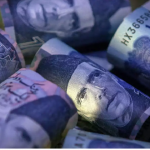The government is likely to increase power tariff of Distribution Companies (Discos) by Rs 0.35 per unit for second quarter of fiscal year 2019-20 to collect about Rs 30-35 billion from consumers’ as capacity payment of IPPs as per agreement with the International Monetary Fund (IMF). This will be in addition to Rs 1 per unit increase in Fuel Price Adjustment (FPA) of November 2019, hearing of which is scheduled for January 29, 2020 as well as for the annual tariff increases.
Some of the Discos have already filed their annual tariff petitions with the National Electric Power Regulatory Authority (Nepra) whereas others are ready to file soon. The regulator will hear the petition of Quetta Electric Supply Company (Qesco) on January 29, 2020. The dates for other Discos are also being fixed by the regulator.
The current notified uniform weighted average electricity tariff is PRs 13.51/kWh for all classes of consumers and includes the following tariffs and surcharges: (i) weighted average tariff of PRs 11.95/kWh, (ii) inter-disco tariff rationalization of PRs 1.03/kWh, (iii) debt servicing surcharge (DSS) of PRs 0.43/kWh, and (iv) Neelum-Jhelum Surcharge of PRs 0.1/kWh. The current notified electricity tariffs for users at 0-50 kWh/month of PRs 2/kWh will be retained.
Informed sources told Business Recorder, the government has already agreed with the IMF that 25 per cent capacity payment of Rs 150 billion be passed on to the consumers.
For selected public sector companies’ collections are planned to increase by 5 per cent from FY 2020 and average loses are planned to be reduced to 16.01 per cent from existing level of 17.7 per cent through efficiency gains. Collection from government customers will be rationalized and subsidies will be on actual basis and paid according to schedule.
The stock of arrears is restricting cash flows of the public distribution companies (DISCOs), hampering the sector’s development. It also represents a significant quasi-fiscal risk, including combined annual debt servicing costs exceeding PRs 100 billion. The authorities are developing a strategy, together with IFIs, to settle the stock of arrears. The main elements of the strategy include: (i) issuance of new government guarantees in the amount of PRs 200 billion to transfer costly system arrears into PHPL; (ii) absorption of PHPL into the general government, which will lower debt servicing costs; and (iii) reduction in the stock of outstanding payables through the use of power assets privatization proceeds, recoveries from the outstanding stock of receivables, the existing debt servicing surcharge, and the rightsizing of sector-related subsidies. IMF Staff stressed that progress in the stock strategy must be linked to timely and measurable progress in the implementation of the circular debt reduction plan and be consistent with the fiscal envelope.
The CD plan proposes: (i) improving power distribution collection in selected Distribution Companies (Discos) annually in the range of 3 per cent to 5 per cent that will reduce circular debt flows by Rs 334 billion over the plan period (FY20-FY23); (ii) five Discos to achieve 100 per cent collection over the plan period; (iii) reducing line losses in selected Discos annually by approximately 1 per cent that will provide fiscal space of Rs 118 billion over the plan period; (iv) annual projected generation and sales of Rs 136 GWh and 111 GWh respectively by FY 2022-2023; (v) rationalization of subsidy allocations to bring it to a previous agreed level of 0.4 per cent of GDP from existing level of 0.6 per cent of GDP; (vi) annual reduction of running and permanent defaulters by Rs 78 billion; and (vii) reducing power sector annual flows to less than Rs 75 billion per annum (FY22-23) from the level of Rs 465 billion per annum (FY2018-19).







